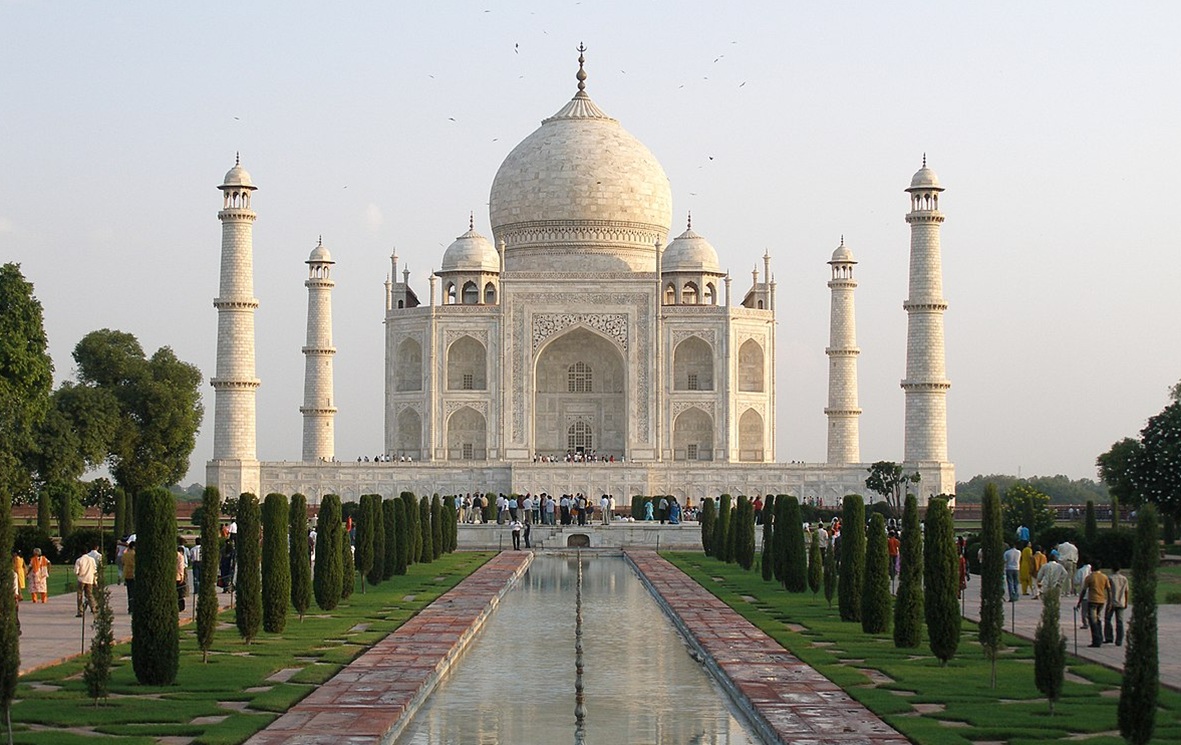 Introduction
Introduction
The Taj Mahal, located in Agra, India, is one of the Seven Wonders of the World and a timeless symbol of love. Built by Mughal Emperor Shah Jahan in memory of his wife Mumtaz Mahal, this masterpiece attracts over 7 million visitors annually. Its breathtaking white marble architecture, rich history, and cultural value make it one of the most visited monuments worldwide.
History of the Taj Mahal
The story of the Taj Mahal begins in 1631, when Mumtaz Mahal, the beloved wife of Emperor Shah Jahan, died during childbirth. Heartbroken, Shah Jahan vowed to build the most beautiful tomb ever known.
-
Construction Start: 1632
-
Completion: 1653 (about 22 years)
-
Labor Force: Over 20,000 artisans and workers
-
Architects: Led by Ustad Ahmad Lahauri
The Taj Mahal was designed to reflect paradise on Earth, combining Persian, Islamic, and Indian architectural elements.
Architectural Brilliance
The Taj Mahal is renowned for its perfect symmetry and exquisite detailing. Built from Makrana white marble and adorned with precious stones, it changes colors throughout the day—pink at sunrise, milky white at noon, and golden under moonlight.
Key Features:
-
Main Dome: 73 meters high with a lotus design.
-
Minarets: Four slender towers leaning slightly outward for earthquake protection.
-
Calligraphy: Verses from the Quran inscribed with black marble inlay.
-
Charbagh Gardens: Inspired by Persian design, symbolizing the Islamic concept of paradise.
-
Marble Inlay Work: Precious stones like jade, lapis lazuli, and turquoise decorate the walls.
This architectural harmony makes the Taj Mahal a UNESCO World Heritage Site and one of the most admired monuments in the world.
Symbol of Eternal Love
The Taj Mahal is not only an architectural wonder but also a monument of love. Shah Jahan and Mumtaz Mahal’s story continues to inspire people across generations. When Shah Jahan died in 1666, he was buried beside Mumtaz Mahal, uniting them forever inside the mausoleum.
Cultural Importance
The Taj Mahal holds immense significance in Indian culture and beyond:
-
A national symbol of India, appearing in literature, films, and art.
-
A major contributor to India’s tourism industry, drawing millions of domestic and international travelers.
-
A representation of Mughal artistry and cultural fusion.
It is often described as “a poem in marble,” admired not just for beauty, but for the story it tells.
Interesting Facts About the Taj Mahal
-
It took over 22 years to build.
-
More than 1,000 elephants were used to transport building materials.
-
The monument appears to change colors depending on the sunlight and moonlight.
-
British officials once considered dismantling it to sell its marble.
-
It is visited by 7–8 million people each year.
Travel Guide: Visiting the Taj Mahal
📍 Location
Agra, Uttar Pradesh, India – about 200 km from New Delhi.
🕰️ Best Time to Visit
-
October to March: Cool, pleasant weather.
-
Full Moon Nights: Special night viewing sessions are offered.
🎟️ Ticket Prices (Approximate)
-
Foreign Tourists: INR 1100 – 1200
-
Indian Tourists: INR 250 – 300
-
Children (below 15 years): Free
⏰ Opening Hours
-
Open: Sunrise to Sunset (except Fridays, reserved for prayers).
🚗 How to Reach
-
By Air: Agra Airport (domestic) or New Delhi International Airport.
-
By Train: Agra Cantt Railway Station.
-
By Road: 3 - 4 hour drive from Delhi via Yamuna Expressway.
✅ Visitor Tips
-
Buy tickets online to save time.
-
Arrive early morning for the best views and fewer crowds.
-
Large bags, food, and tripods are restricted.
-
Wear comfortable footwear, as there’s a lot of walking.
Preservation of the Taj Mahal
Over the centuries, pollution and overcrowding have threatened the Taj Mahal. The Indian government and UNESCO have introduced strict measures:
-
Restricting vehicle traffic near the monument.
-
Regular cleaning of marble with a clay-pack treatment.
-
Promoting eco-friendly tourism.
Thanks to these efforts, the Taj Mahal continues to shine as one of the world’s greatest wonders.
Conclusion
The Taj Mahal is more than just a monument it is a symbol of eternal love, artistic brilliance, and cultural pride. With its breathtaking design, deep historical roots, and unmatched beauty, it remains one of the most iconic landmarks in the world.
A visit to the Taj Mahal is not just a trip, but an experience of timeless beauty and a reminder of love that transcends generations.

You must be logged in to post a comment.